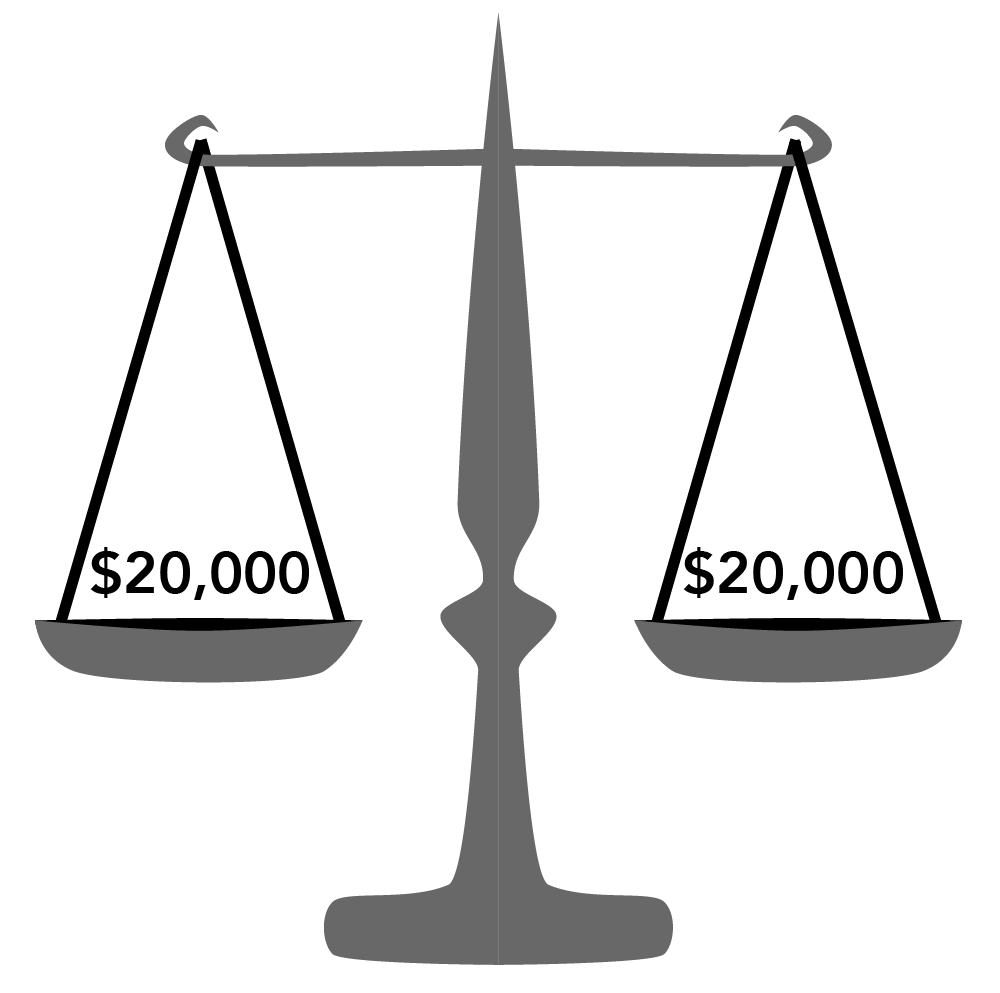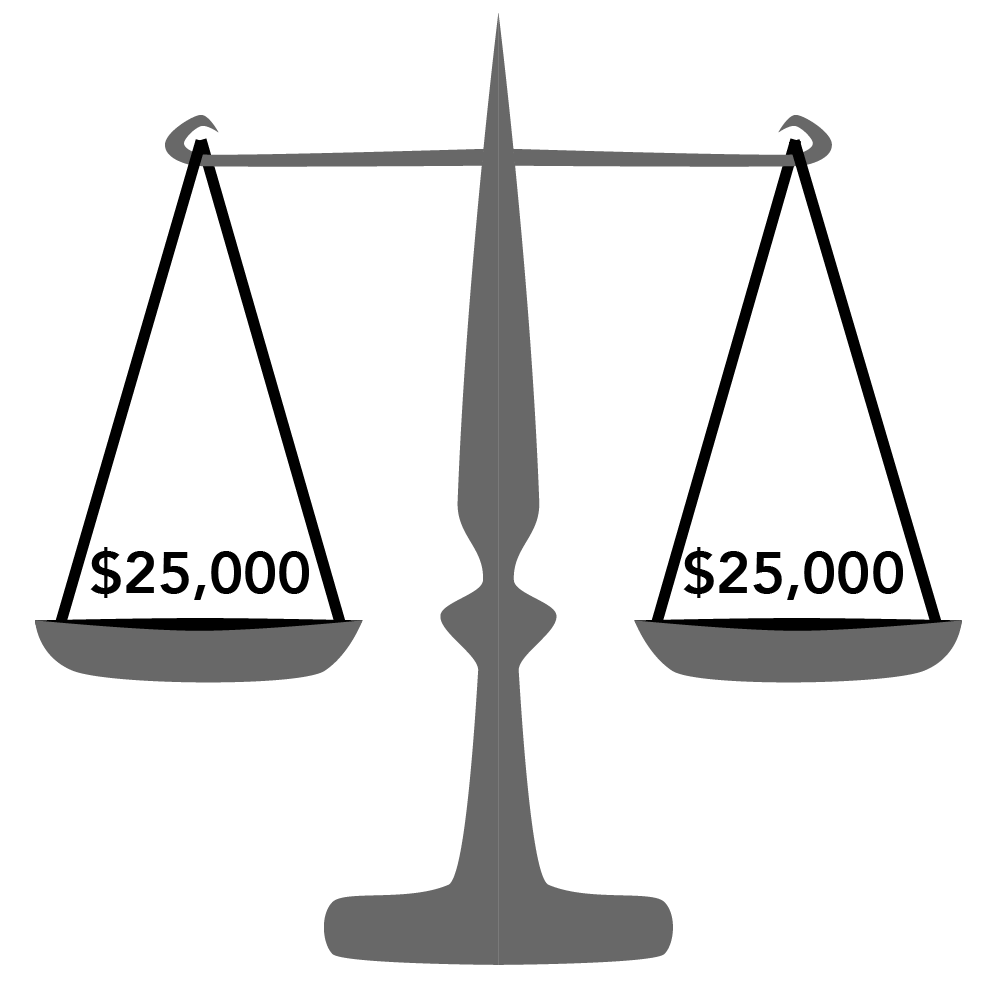- Explain the basic accounting equation
One of the cornerstones of financial accounting is the accounting equation, which in its simplest form, looks like this:
A=L+OE
This equation has to always stay in balance.
Balancing a New Business
An owner registers their new company with the state department of business licensing. They take their business license down to the bank and transfer $20,000 of their own money into a new business account. They have now “capitalized” their business, which means they made a contribution to capital, which increases owner’s equity.
At the same time, they have increased the balance in their checking account. From a bookkeeping perspective, you have to make two entries for this one business transaction, and these two entries balance each other out.
A=L+OE
$20,000=$0+$20,000

Now, suppose the owner also borrows $5,000 from the bank, which is then deposited into their account. A loan will not increase their equity. It is not a capital contribution. It is debt, which is a liability.
Now, the equation looks like this:
A=L+OE
$25,000=$5,000+$20,000

Assets are what the business owns. Liabilities are what it owes, and equity is the amount of the company that belongs to the business owner.
Balance in a Home Loan
Think of the equation in terms of a house. Say the house costs $250,000 and you owe $200,000 to the bank. Your equity in the home is $50,000.
A=L+OE
can also be stated as:
A-L=OE
Assets-Liabilities=Owner's Equity
In the case of the house cited above, the equation is $250,000 - $200,000 =$50,000.
Accounting Equation
Commit this important accounting concept to memory: Assets = Liabilities + Owner’s Equity